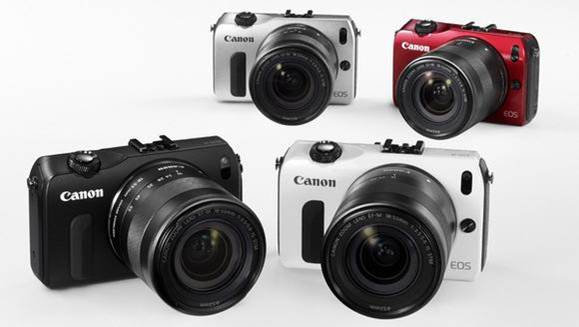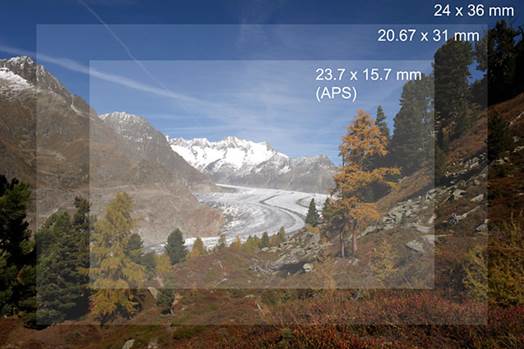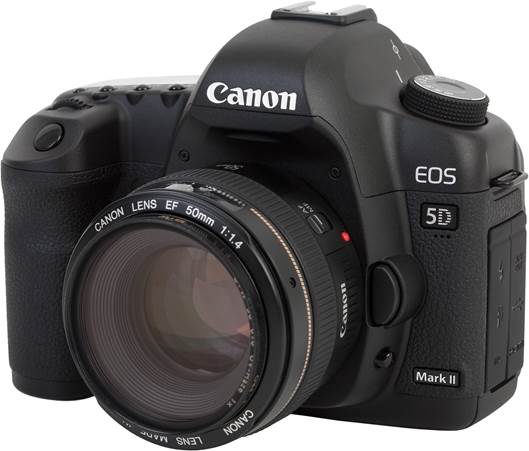New models and dropping prices put
the benefits of full-frame in the hands of more photographers
Full-frame DSLRs are hot! The reasons?
Well, image quality, for starters: All other things being equal, a full-frame
sensor can collect more light than a smaller one, and that means a better
signal-to-noise ratio (see the sidebar for more about this). And that means
better image quality, with less noise, especially at higher ISO settings
full-frame DSLRs hold the top 17 positions in DxOMark.com s RAW sensor ratings
for high-ISO performance, while the highest-rated APS-C camera ranks
twenty-first. Full-frame sensors also have room for more pixels of a given
size, and more pixels mean more detail can be recorded.

New
models and dropping prices put the benefits of full-frame in the hands of more
photographers
Another potential advantage is that
full-frame sensors also "see" more of the image produced by any given
lens, while smaller sensors "crop in" on that image, producing a
narrower angle of view. For example, a 16mm lens on a full-frame camera shows
the same angle of view it does on a 35mm film SLR, but frames like a 24mm when
used on an APS-C DSLR. This makes serious wide-angle photography easier with a
full-frame camera. There are a number of excellent 16mm prime lenses and
16-35mm zooms available; to get that wide an angle of view with an APS-C DSLR,
you'd need a 10.5mm lens, of which there aren't as many choices.
Of course, the above benefits have been
there from the first full-frame DSLR. (Canon's original EOS-IDs, in 2002, was
the first really successful full-frame DSLR.) What has changed recently is the
introduction of full-frame DSLRs at a much more affordable price point: Canon
and Nikon offer new full-frame models the EOS 6D and Nikon D600 that list for
$2,099. The price of Canon's EOS 5D Mark II has dropped to $2,199 now that the
EOS 5D Mark 111 has joined the line. And Sony has produced the first full-frame
translucent mirror SIT (more on that technology later) at a list price of
$2,799.

Full
frame
That's still higher than APS-C DSLRs, but
roughly half the price of the top-tier pro cameras. Why do those pro models
cost so much more? Mainly because they're more ruggedly built, can shoot 10 or
more frames per second, and have better autofocus (AF) and metering systems and
higher usable ISO capacities. But the new "entry-level" full-frame
models are no slouches: The Nikon D600 rates third overall in DxOmarkcom's
sensor ratings.
These new lower-cost models aren't the
first such cameras - Sony introduced the now-discontinued full-frame DSIJR-A850
at $1,999 in 2009. But this is the first time there have been so many options.
If you like Canon, there's the full-frame EOS 6D for $2,099 (also, the EOS 5D
Mark II at $2,199, the EOS 5D Mark III at $3,499 and the flagship EOS-ID X at
$6,799). If you prefer Nikon, there's the full-frame D600 for $2,099 (also, the
D800 for $2,999, the D800E for $3,299, the D4 for $5,999 and the D3X for
$7,999). And Sony offers the unique SLT-A99 for $2,799, which accepts Sony
A-mount and legacy Konica Minolta Maxxum lenses. That's 10 full-frame DSLRs,
half of which list for under $3,000.
Of course, even $2,099 is a lot of money,
which is the major "con" to the full-frame DSI.R. Full-frame cameras
also are bulkier than smaller-sensor models. (I personally like a bigger DSI.R
body, but many think smaller is better, hence the rapid rise of the mirror less
inter-changeable-lens cameras over the last few years.) If you're a wildlife
photographer, a smaller-sensor camera gives you more telephoto
"reach:" On an APS-C camera, a 300mm lens frames like a 450mm.

Canon's
EOS 5D Mark II
If you're into telephoto lens work, an
APS-C DSLR is a more economical way to go. Canon, Nikon and Sony lenses longer
than 400mm cost more than $8,000 (although Sigma and Tamron offer slower
tele-zooms that go out to 500mm for around $1,000). Of course, the opposite is
also true: If you're into wide-angle work, a full-frame camera gives you a
wider angle of view with any given lens.
Anyway, the point is, there have never been
more full-frame models available at near APS-C prices than there are right now.
And that - the previous paragraph notwithstanding means there never has been a
better time to go full-frame.